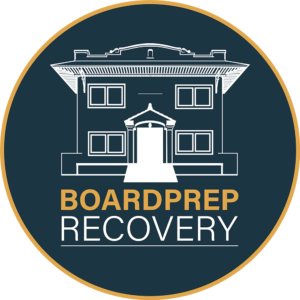According to the latest National Survey on Drug Use and Health (NSDUH), published by the federal Substance Abuse and Mental Health Services Administration (SAMHSA), 37 million people in the U.S. (13½%) used an illegal drug in the past month.[1] And some among these numbers are healthcare professionals.
Indeed, past data show doctors, nurses and others in the healthcare field actually have a higher rate of substance abuse and addiction (a.k.a., substance use disorder) than the general population – 10-14% as compared to 9-10% for the general public.[2]
And though it may seem counterintuitive—people in the medical field have in-depth knowledge of the health sciences and have committed themselves to aiding the health of others; why wouldn’t they do all they could to live healthy lives themselves?—drug addiction afflicts doctors and nurses just as it does people from every walk of life, regardless of profession, age, gender or race.
Stephanie Rhodes, Communications Manager for the University of Michigan (U of M) Department of Psychiatry and Depression Center, took the time to interview Dr. Edward Jouney, addiction psychiatrist and clinical instructor with the U of M Addiction Treatment Services, to find out more about the nature of impaired healthcare professionals.[3]
What follows is a summary of Jouney’s responses to Rhodes’ interview questions.
When asked about typical workplace indicators of chemical dependency in a healthcare professional, he said those who “struggle with alcohol addiction may have an impaired or diminished perception of their behaviors… a diminution in their ability to recognize problematic alcohol use… loved ones or co-workers may convey concern about their use… (especially) the ingestion of an alcoholic beverage before going to work.”[4]
When Rhodes asked about warning signs of dependency on other substances, particularly addictive prescription medications, Jouney explained, “Physicians are five times more likely to abuse opioid pain medications and benzodiazepine anti-anxiety drugs than the general population. For healthcare workers, the relative ease of access to certain controlled substances is (a) contributing factor for addiction. It is worth noting that the body becomes dependent or habituated on drugs after two to three weeks.”[5]
After he pointed out the three main reasons that increase the likelihood a person gets addicted—genetics, one’s psychiatric history, and their social environment—he went on to describe common indicators a healthcare professional may have a substance use disorder. Jouney cited:
- Recurring absences or tardiness
- Problems with functionality
- Difficulty executing clinical decisions
- Making documentation errors
- Changes in productivity levels
- Disappearing for hours during the work day
- Not returning calls, texts or pages
- Appearing impaired or disheveled
- Slurring speech
- Smelling of alcohol
Rhodes then asked whether or not Jouney had any recommendations for those who themselves were struggling or knew someone who was struggling with a substance use disorder. He replied, “The University of Michigan Addiction Treatment Services is home to providers who have experience working with licensed healthcare providers who struggle with substance abuse problems. If you are experiencing substance-related problems, you can contact the team to set up a confidential assessment.”[6]
Rhodes asked him if he had any further advice or perspective he wished to share with readers. Referring to one of the nation’s many state Professionals Resource Networks (PRNs), who refer to treatment and have monitoring programs for licensed doctors, nurses and other healthcare workers with chemical dependency issues, he said they are, “…designed to ensure that licensed healthcare providers are obtaining the necessary treatment so that they can get back to work. (These programs have) been shown to increase the recovery rate of participants, and it helps improve outcomes.”[7]
[1] “Key Substance Use and Mental Health Indicators: Results from the 2020 National Survey on Drug Use and Health.” SAMHSA. 2020.
[2] Bush, D.M. & Lipari, R.N. “Substance Use and Substance Use Disorder by Industry.” SAMHSA. April 16, 2015.
[3] Rhodes, S. “Signs & Symptoms of Addiction in Medical Professionals.” M Health. July 13, 2018.
[4] Ibid.
[5] Ibid.
[6] Ibid.
[7] Ibid.







